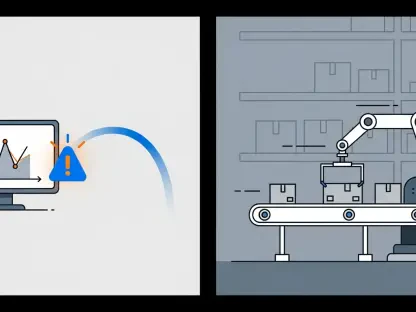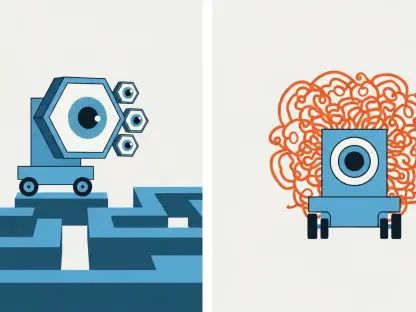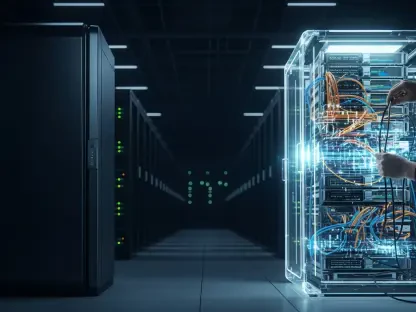In recent years, Apple has become increasingly focused on advancing its capabilities in artificial intelligence, particularly in the domain of AI image generation. The technology giant has introduced STARFlow, a groundbreaking system designed to compete with leading AI image generators backed by companies like OpenAI and Google. Apple’s machine learning research team has embarked on a path to develop AI systems capable of generating high-resolution images, seeking to redefine Apple’s AI innovation standing. Prior diffusion models such as DALL-E and Midjourney have set a formidable benchmark, but Apple aims to challenge their supremacy and alter the landscape of AI image synthesis. While Apple has faced criticism over its perceived lag in AI capabilities, the STARFlow initiative represents a strategic shift. Apple is determined to carve a niche through technological advancements that promise to deliver unrivaled benefits in the AI domain. This effort spearheads Apple’s broader strategy to innovate through distinctive approaches, setting the stage for STARFlow to potentially become a game-changer in image generation technology.
Technical Advances and Strategic Implications
The STARFlow system has emerged from extensive research, detailed in a recent publication, leveraging normalizing flows combined with autoregressive transformers to offer competitive performance alongside state-of-the-art diffusion models. Collaborating with esteemed academic partners, Apple’s researchers have made significant strides in scaling normalizing flows effectively for producing high-resolution images. Traditionally, diffusion models and generative adversarial networks have held the spotlight in complex image synthesis tasks due to their power and precision. Yet, by harnessing Apple’s distinctive approach, using normalizing flows, STARFlow achieves comparable outcomes without compromising on computational efficiency or flexibility.
Key features within STARFlow highlight the innovative “deep-shallow design,” wherein a deep Transformer block enhances representational capacity, supported by shallow Transformer blocks that add computational efficiency. The system operates within the latent space of pre-trained autoencoders, opting for enhanced efficiency as opposed to direct pixel-level modeling. STARFlow’s ability to retain the mathematical purity of normalizing flows facilitates precise maximum likelihood training, circumventing the need for iterative denoising processes common in diffusion models. This capability offers distinct advantages, particularly in applications demanding exact control over generated content, placing Apple in favorable positions within enterprise solutions that require assurance of model uncertainty.
Challenges and Academic Collaborations
While STARFlow showcases technological advancements, the critical question arises: can Apple translate these breakthroughs into consumer-friendly features that resonate with audiences? Competitors like ChatGPT have effortlessly transitioned innovations into practical applications, raising the stakes for Apple to innovate swiftly and effectively. Reinforcing Apple’s strategy, embracing academic collaborations has been pivotal. STARFlow is the embodiment of partnerships with leading institutions, featuring contributions from notable researchers such as Tianrong Chen from Georgia Tech, Ruixiang Zhang from U.C. Berkeley, and Laurent Dinh from Google Brain and DeepMind. Their expertise in areas like stochastic optimal control and generative modeling underpins STARFlow’s capabilities.
Such collaborations enhance Apple’s ability to integrate specialized knowledge across the AI spectrum, fostering a creative environment conducive to innovation. The dynamic intersection of academia and industry propels Apple’s endeavor to push boundaries, ensuring that emerging technologies actualize into impactful solutions. Strategic academic alliances bolster Apple’s initiative to stay ahead in the competitive AI landscape, where continuous evolution is imperative.
Future Prospects and Industry Impact
In recent years, Apple has ramped up its focus on enhancing artificial intelligence capabilities, honing in on AI image generation. With this goal, the tech giant introduced STARFlow, an avant-garde system set to rival top AI image generators like those from OpenAI and Google. Apple’s machine learning experts are striving to produce systems that can generate high-resolution images, aiming to redefine Apple’s role in AI advances. Existing models such as DALL-E and Midjourney have established a challenging precedent, but Apple’s aspiration is to surpass these benchmarks and redefine the field of AI image synthesis. Despite criticism over its perceived slowness in AI advancement, STARFlow marks a pivotal shift in strategy. Apple’s commitment lies in carving out a unique space through groundbreaking technology that promises unmatched AI benefits. This initiative is a key element in Apple’s larger strategy to innovate through unique methodologies, setting the stage for STARFlow potentially to revolutionize image generation technology.









